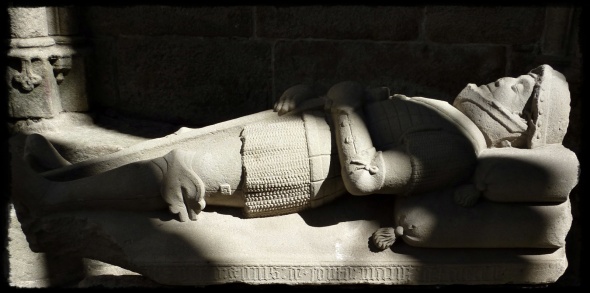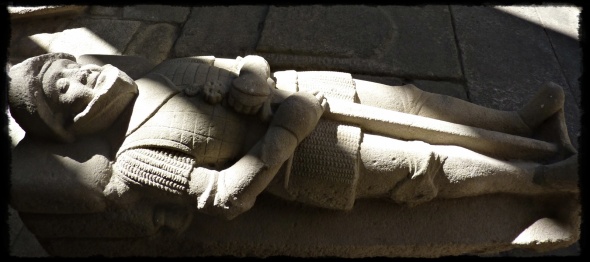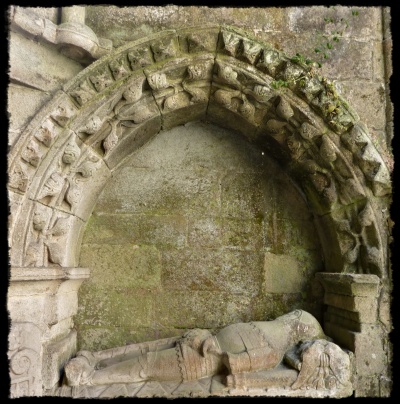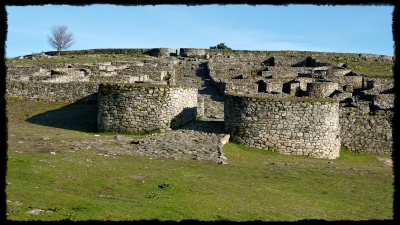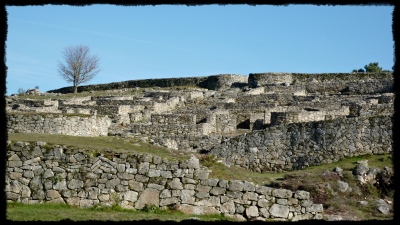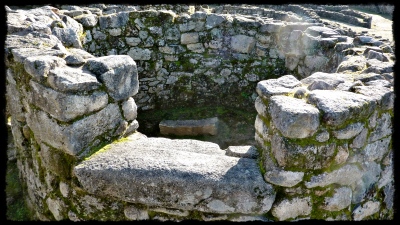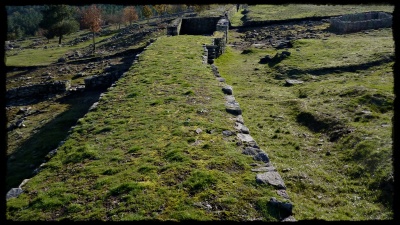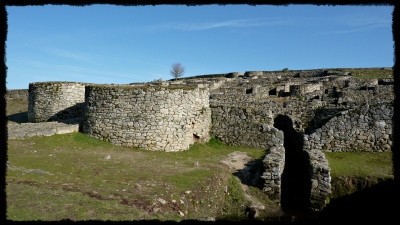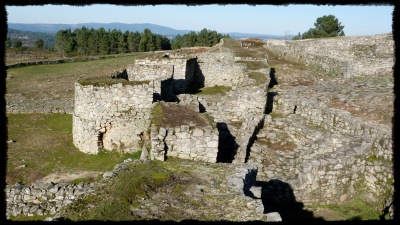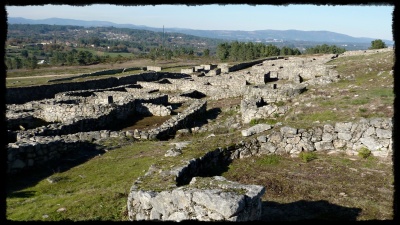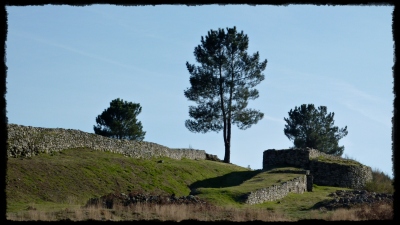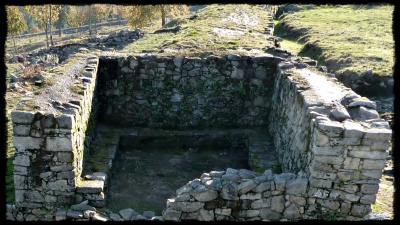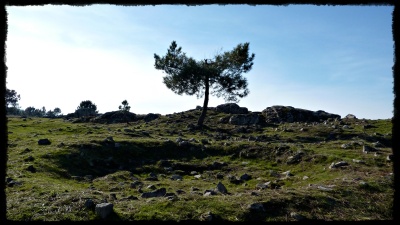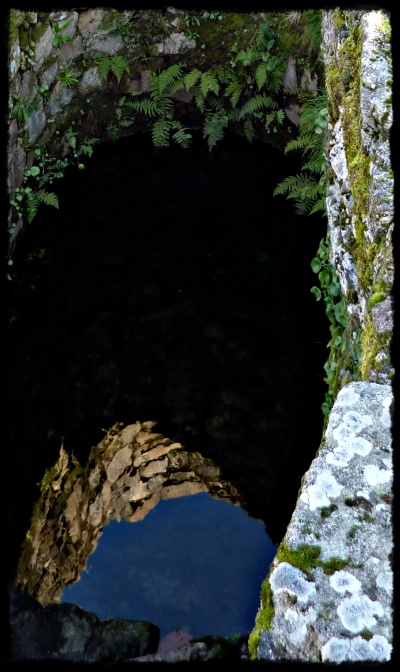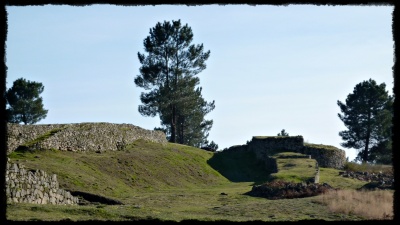Sueiro Gomes de Soutomaior

Sepulchre of the nobleman Sueiro Gomes de Soutomarior, in the ancient convent of Saint Dominic, in Pontevedra. He died in 1485.
In his time, he was the second most notable knight of the very important house of Souto Maior, only second to his cousin Pedro Alvares, known as Pedro Madruga (‘Peter who gets up early’) for his capacity for -almost- always get ahead of the movements of his enemies.
Sueiro Gomes took the title ‘mariscal’ (marshal) for his successes in the various wars he fought, against city councils, against the powerful archbishop of Santiago de Compostela, and against other noblemen.
The inscription, in Galician, says ‘[aqui jaz] Sueiro : Gomes : de : Souto Maior : que : faleceu […]’:
‘Here lies Sueiro Gomes de Soutomaior who died […]’. The exact data of his death was intentionally left blank, and was never recorded in the monument.
We preserve the extensive last will of Sueiro Gomes, issued in 1485 and written in Galician language; here is an excerpt:
“Enno nome de Deus, amen. Sepan todos como eu o mariscal Sueiro Gomes Vasallo dos Reis nosos señores que presente estou jazendo doente daquela doença e enfermedade que Deus tobo por Ven de me dar (…) fago mea manda e testamento e mea postrimeira vontade, e ordeno meus bens vasallos e fazenda como despois do meu pasamento (…) fiquen repartidos e ordenados a servicio de Deus e a salvacion da mea alma (…) Item, mando ser sepultado o meu corpo quando a Deus projer eno mosteyro de Santo Domingo da Vila de Pontevedra a donde jas meo señor Padre Paio Gomes de Soutomayor e meus aboos que Santa Gloria ajan, en sepultura que ende teño feita para min (…)”
‘In the name of God, amen. Let everyone know how I, the marshal Sueiro Gomes vassal of the Kings our Lords, being present and lying sick of the sickness and infirmity who God decided to bring to me (…) I do my testament and last will, and I order my properties, vassals and rents, so after I am gone they will stay well divided and ordered to the service of God and to the salvation of my soul (…) Item, I order that my body shall be buried, whenever God wants to, in the monastery of Saint Dominic in the town of Pontevedra, where my father Lord Paio Gomes de Soutomaior and my grandfathers lie, in the sepulchre which I have already done for myself (…)’
Hillfort of San Cribrao de Las.

The hill fort at San Cibrao de Lás is one of the largest Iron Age hill forts in Galicia, where hundreds are known.
In times it was a true city, an oppidum, home to some three thousand inhabitants
Although we don’t really know the ancient and original name of this place, we have a Roman times altar, reportedly found in the hill fort, where a dedication to a local god or goddess Bandua (‘To Bandua of Lambri’):
BANDU
A LAMB
RICAE
supposedly preserved the name of the place, which would be Lambri, Lansbri, Lanobri… depending on the correct reading of the inscription (Prósper 2002: 258). In any case the second half of the name would be the celtic element -bri ( < PCl *brig-s < PIE *bhrgh-s), meaning ‘hill fort’ or ‘hill’ (take a look at this):
- Ara from Eiras (Wikipedia)
The modern local name of the local parish where the hillfort is, Lás, was thought to be a modern rendering of the old name, but medieval local records, in Galician, show that Lás derives from Eilães:
“Conuçuda cousa sega a quantos esta carta viren como eu, dona Costança Ferrnandez (…) dou a vos (…) o meu casar d’Alemparte, con todas suas dereituras e con todas sas pertiiças, o cal casar jaz su sino de San Cibraao d’Eilaes” [For the knowledge of anyone who would read this charter I, Lady Costança Fernandez, give to you (…) my hamlet of Alemparte, within all of its limits and together with all of its properties; the aforementioned hamlet is under the sign of Saint Ciprian of Eilaes] (Dozón 1283, doc. 66)
Eilães derives probably from *Egillanis, genitive of the Germanic personal name Egil(l)a (Förstemann 1900: 28), a popular name in medieval Galicia, so Lás means simply ‘Egila’s property’:
∞ ∞ ∞
Some other views of this magnificent hillfort:
An aerial view:

San Cibrao de Las (www.arenteiro.com)

